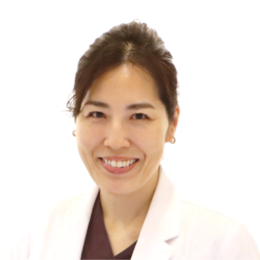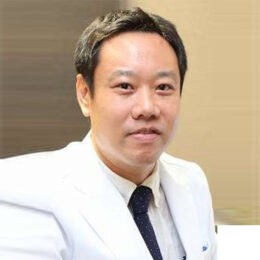
Thank you for visiting the website of Jeisys Medical Japan. Acne is a skin inflammation caused by excess sebum production, hormonal imbalance, or bacterial growth. Many people may visit clinics for treatment, as severe cases may take long time to improve and scarring may occur. Treatment with POTENZA is used in many clinics to improve such inflammation. In this issue, Dr.Keiko Hanaoka, Keiko Hanaoka Skin Clinic, will introduce the treatment of acne using POTENZA.
- INDEX
Background of POTENZA introduction(03:35~)

The problem with acne treatment is that insurance-covered treatment has its limitation. We have attempted to treat many acne patients by prescribing topical medications under insurance coverage.
However, skin treated with topical medications often leaves scars, which in time may leave scarring. Therefore, we proposed a self-pay treatment combination that was quick and effective, leaving no scarring.
Until then, the most common self-funded acne treatment had been chemical peels, but the level of improvement was limited. The introduction of POTENZA instead has revolutionized the way we treat acne.
About POTENZA(4:17~)
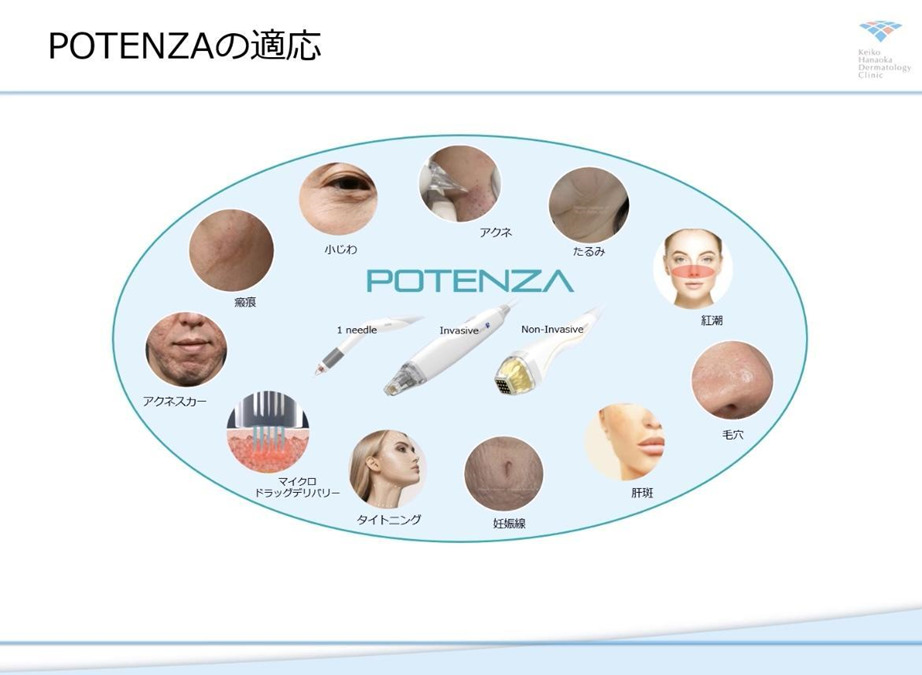
POTENZA tips include needle, invasive, and diamond tips. In addition to acne, a variety of skin treatments are available, including sagging, pores, and melasma.

POTENZA microneedling is expected to promote wound healing. It works well for acne scars as the monopolar RF coagulates sebaceous glands and regenerates tissue.
Handpieces and tips used in our clinic(6:22~)

For acne treatment in our clinic, we use the “AC handpiece” or the “M handpiece”. We also use “A1-12” and “S-25” tips.
Korean sources report that the sebaceous glands that cause acne lies at a depth of about 1.2mm below skin surface. A1-12 and S-25 needles were selected for the treatment because of their 1.2 mm length.

A1-12 has a 1.2 mm needle depth and emits heat 0.3 mm from the tip, targeting a single spot for deep irradiation, making it suited for improving new or large pimples.
While S-25 has 1.25mm needle depth, with heat emission at 0.95 and 0.4 mm from the tip.
It is suitable for treating vague scars as it can irradiate over the entire area. It can also be used to treat new and healing acne the same time.
Case study with A1-12 tip(10:56~)

Chin acne was treated each with needle and heat; it recovered well after 1 session and has not recurred in the 6 months since the 2nd session.
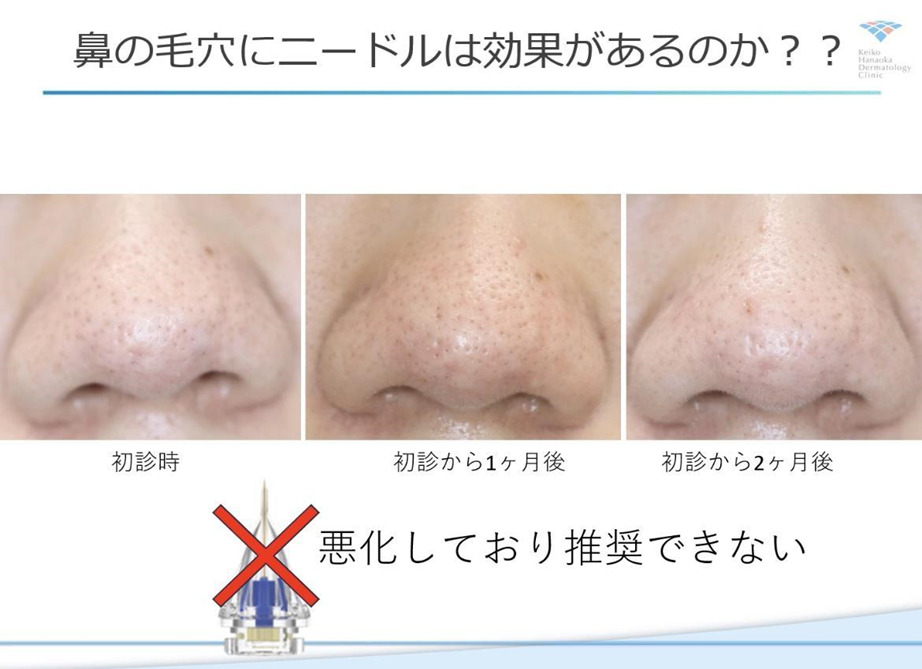
However, we advise not to use POTENZA to improve the pores of the nose, as it can worsen the condition.
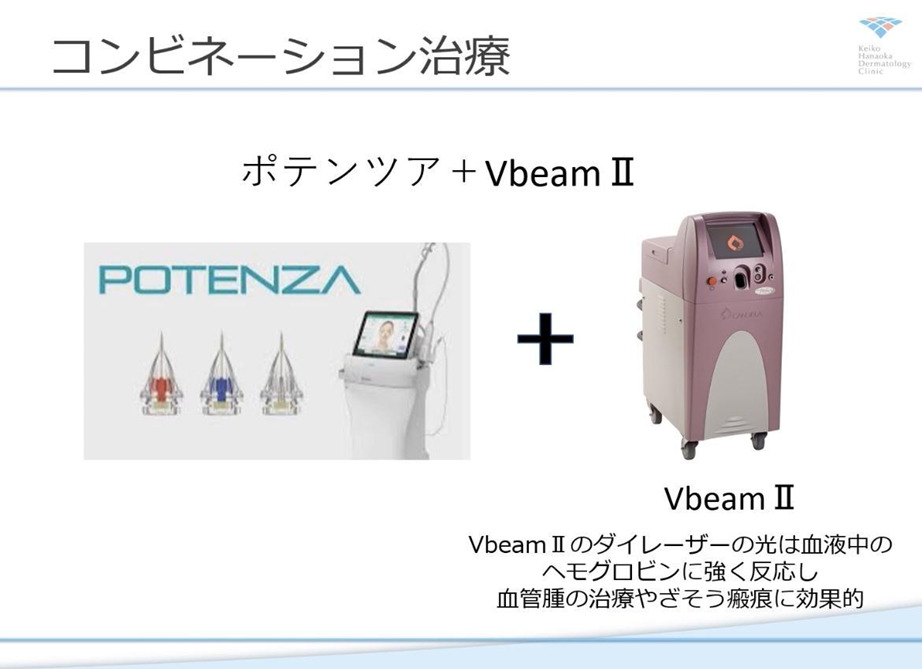
POTENZA alone is effective enough to improve redness, but combined use of Vbeam II is even more effective.

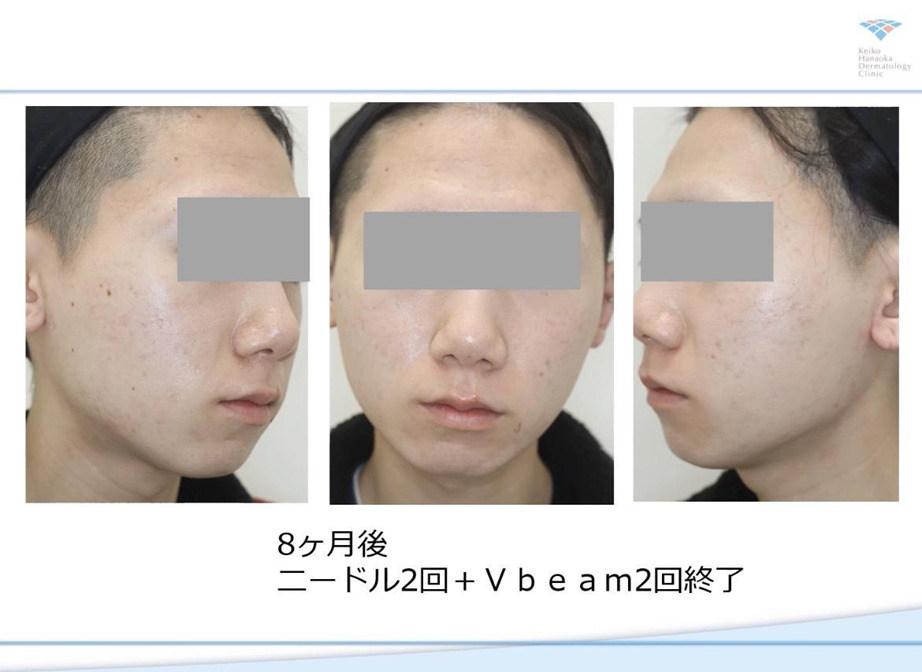
In fact, after A1-12 tip calmed the acne, Vbeam II was applied twice and the reddish scar was almost completely eliminated.
Please watch the video to learn more about cases using A1-12 tip.
Summary of A1-12 tip(20:18~)
A1-12 tip has a single needle and requires no anesthesia; it is suitable for cases with few acne lesions as heat is applied to one site at a time.
This is an accessible treatment with low needle costs with makeup available right after the session. However, we do not recommend it for improving nose pores. It is easy to feel the effects of this treatment after 1-2 sessions, leading to high patient satisfaction.
Case study with S-25 tip (20:24~)

Initially, we treated the reddened areas with A1-12, but due to the numerous acne, we switched to S-25 tip.
After applying an anesthetic cream (10% lidocaine cream) for 30-40 minutes, S-25 tip is irradiated on the entire face.

After two irradiations at level 5, the acne redness improved overall after one month.

To further eliminate redness, Vbeam II was irradiated 4 times after using S-25 tip.
Please watch the video to learn more about S-25 tip case.
Summary of S-25 tip (27:41~)
When using S-25 tip, topical 10% lidocaine cream is applied for 30 minutes in advance. The protocol is RSC mode level 5, 2 pass irradiation.
S-25 tip procedure is suited for patients with many acne as it improves the overall redness. Patient satisfaction seems high, as it is easy to improve after a single treatment.
Issues for the future (28:07~)
For acne, insurance treatment alone may result in residual scarring. Early POTENZA treatment is important if there is a possibility of scarring.
When POTENZA is combined with Vbeam or oral isotretinoin, the therapeutic effect is visible in a short period of time. In addition, we are currently accumulating cases of needle therapy for sweat duct tumors.
